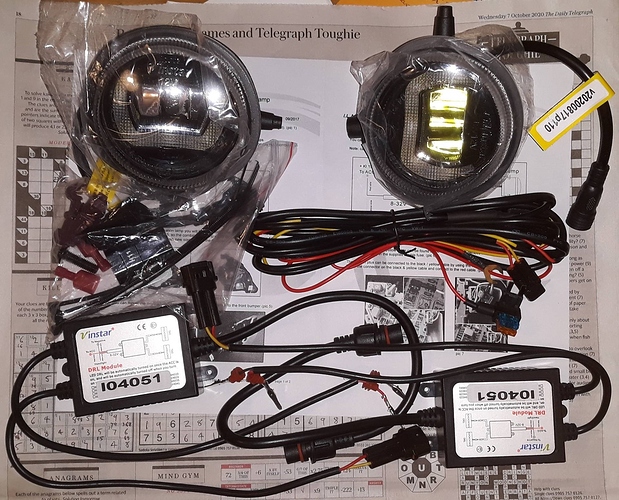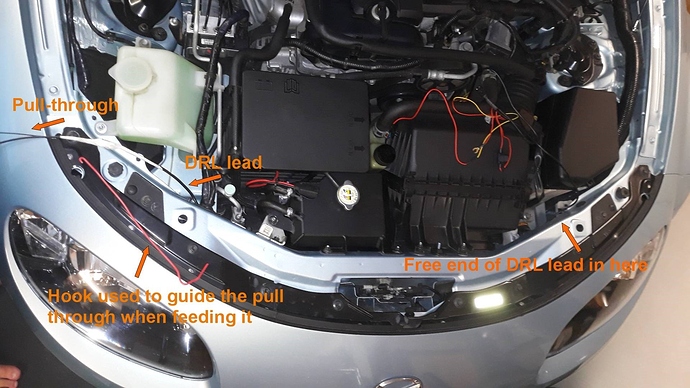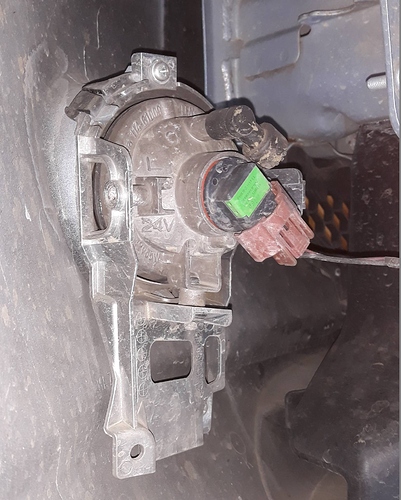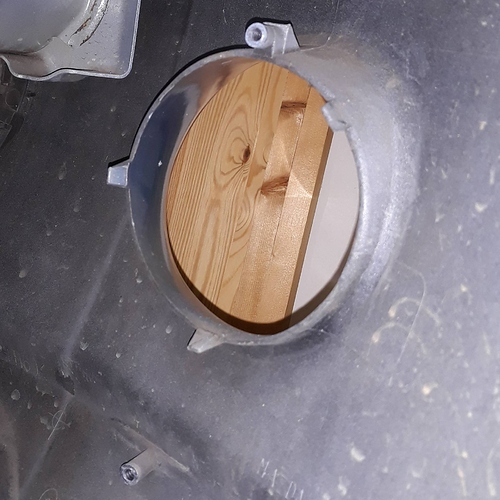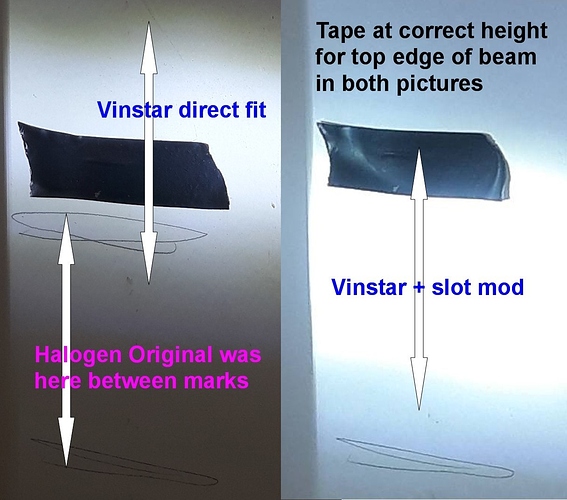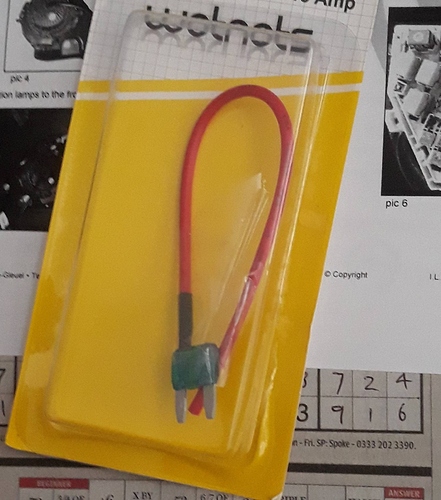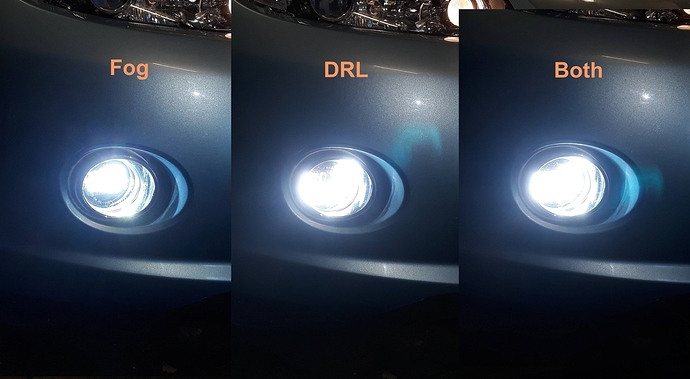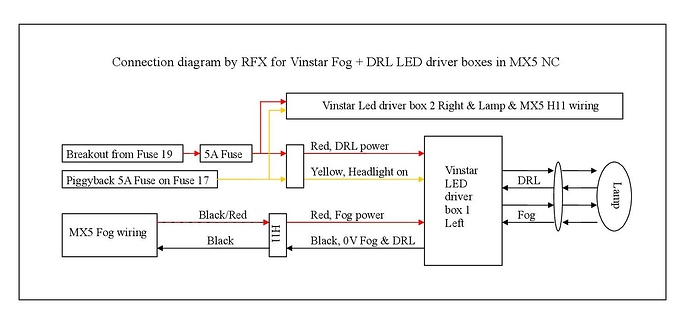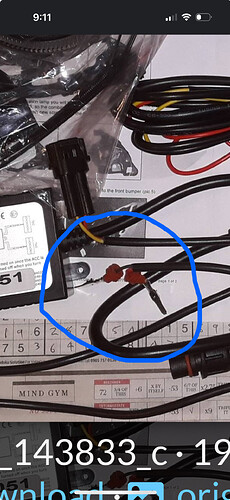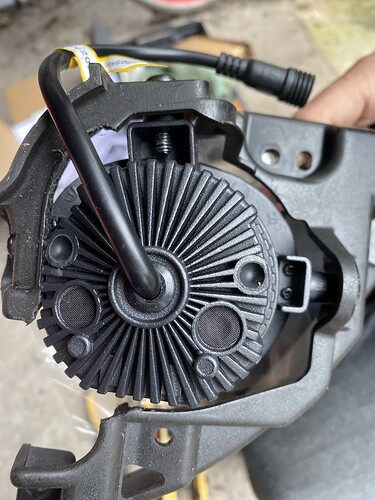Fitting Vinstar DRLs in a 2008 NC
After a top-down drive in the sun to Cliveden early last week and needing to put my lights on because the lanes were so dark with overhanging trees and the 4x4s coming the other way seemed to want all of the road, I’ve bitten the bullet and fitted the Vinstar kit from MX5Parts.
The Fogs take 0.9A each, the DRLs 0.5A each from 12V on the bench, and dropping to a bit less as the volts rise to 14V when engine is running to maintain a constant current on the LEDs themselves.
It is not as simple as the instructions might suggest, and I think I have a better place to take the DRL power feed from in the fuse box.
Further, the Vinstar fogs in the DRL+Fog assembly point just a bit too high, and the mounting bracket MUST be modified (as suggested in the Mazda service manual) to make them adjustable enough to be usable.
The kit of bits supplied.
I tested it all worked on my workbench before taking the car apart. All good.
First of all I needed to thread the new DRL lead through the cross member where the bonnet catch is, this is quite easy with a pull-through (a bit of old 1.5mm copper house wire), and then the lead can sit on top of a fat wiring harness with a few cable ties to prevent it walking. I started by the fuse box and worked it through. The red hook wire was very useful in helping to steer the pull-through when I threaded it through to begin with.
I began taking the car apart on the drivers side, turned the road wheel fully out, and this gives just enough access. Taking the road wheel off would make life easier, but not reduce the overall time. Removing the lower splash shield is quite simple, 11 fasteners removed and it drops down.
Before removing the original fog light I marked its beam pattern on a board a metre away in front of it for future reference, just as well.
This pic shows the original L fog light on the passenger side, driver’s is almost a mirror of this. Each one is held in a bracket by two machine-screws, one is the inboard pivot and the other is the adjustment clamp, easy to remove just be careful not to flex the bracket too much. The outer pivot does not have a screw, and would be awkward.
I tested the R Vinstar in the bracket as a simple fog light, no DRL connection yet, and discovered it pointed too high. Mazda say to file out the bottom fixing hole into a slot to provide a range of adjustment.
I decided to take the bracket out of the car to do the filing, two self-tappers removed and three tabs pushed aside and it comes out quite easily. Underneath the bracket Mazda have relieved the moulding at the adjustment to show the limits one might use. This picture shows what is holding the R bracket.
This picture shows the beam throw before and after adjustments.
I then wired in the DRL leads and tidied everything up with cable ties to prevent it vibrating around.
Repeated the operation on the passenger side, and here is a pic looking up at the installed L Vinstar and driver box and all the extra leads, compare this with the earlier picture above, a lot more cluttered.
Then I routed the last bit of the DRL lead around and into the fuse box. I cut off the surplus, several feet, and kept the in-line fuse for the Red lead (DRL power) and soldered it to this 15A breakout fuse in the 15A slot next to the IGN relay, so the DRL comes on with the Ignition, not the ACC.
I also shortened the Yellow lead going to the piggyback fuse switched by the Headlight relay. I used these handy solder+heatshrink+hotmelt splices to the cables in the car, a lighter is best, a match can be sooty. The end result looks like this.
Three pictures in one. For Fog on, or DRL on, or both Fog and DRL.
Here is the connection diagram of how I’ve installed it, for completeness sake
I’ve yet to figure out how to turn OFF the DRL when the Fog is on headlights off and the ignition is on, I guess a pair of diodes will do for the switching logic, but where to pick up the Fog On signal?
If the expanding fasteners don’t want to fit their holes to secure the splash guards, let them warm up in a mug of hot water for a few minutes. Then hold the one to be inserted closed down unexpanded for a minute while it cools, and it will be a lot more willing for each of its little fingers to find the hole. I discovered a couple were missing, hence the link.
